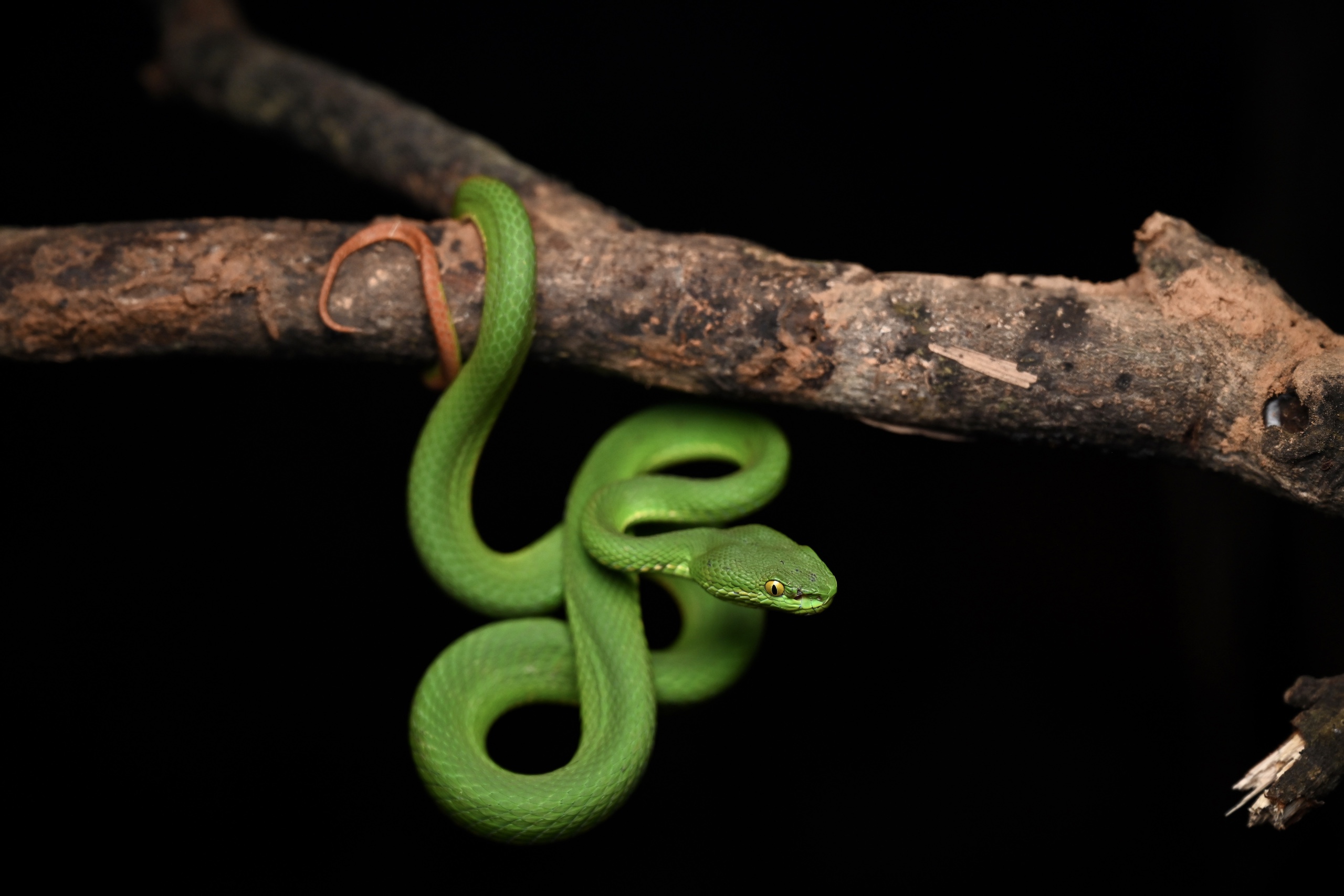If you’ve spent any time herping through the lush forests of Southeast Asia, chances are you’ve heard of the white-lipped pit viper (Trimeresurus albolabris). Known for its vivid green body and distinctive pale or white lips, this snake is one of the region’s most iconic pit vipers. It captures the imagination of field enthusiasts not only for its striking beauty but also for its venomous bite and fascinating behavior.
Appearance and Identification
The white-lipped pit viper is a medium-sized snake, usually ranging from 24 to 36 inches in length, though some females can grow larger. Its bright emerald-green coloration blends seamlessly into the foliage, giving it superb camouflage. The defining feature is the white or light-colored stripe along its upper lip, which gives the species its common name. Males often have a reddish or orange-brown tail tip, while females tend to be more uniformly green.
Another detail worth noting is the heat-sensing pit located between the eye and nostril, a classic feature of pit vipers. This allows them to detect warm-blooded prey even in complete darkness, an impressive adaptation for ambush hunting.
Habitat and Range
Trimeresurus albolabris has a wide distribution, inhabiting countries such as Thailand, Vietnam, Cambodia, Laos, southern China, and parts of Indonesia. It thrives in tropical forests, bamboo thickets, plantations, and sometimes even gardens near villages. This adaptability makes it one of the most commonly encountered pit vipers in its range, particularly during field herping trips through Southeast Asia.
Behavior and Diet
Primarily arboreal, the white-lipped pit viper spends much of its time coiled in low branches or shrubs. It’s a nocturnal hunter, waiting patiently for unsuspecting prey such as small mammals, birds, lizards, and frogs. Despite its stealth, it’s not unusual to see one basking quietly during the day, especially after rain.
When threatened, the snake may hold its ground, coiling into an S-shape and displaying its fangs in warning. Though not aggressive without cause, it should always be treated with caution and respect.
Venom and Medical Importance
The bite of Trimeresurus albolabris is medically significant. Its venom is hemotoxic, meaning it primarily affects blood and tissue. Symptoms may include intense pain, swelling, and bleeding disorders. Fatalities are rare with timely medical treatment, but bites are serious and demand immediate attention. For herpers exploring Southeast Asia, keeping a safe distance and avoiding unnecessary handling is crucial.
Reproduction
Like many pit vipers, the white-lipped pit viper is viviparous, giving birth to live young rather than laying eggs. Females can produce litters of 10–25 neonates, which are independent from birth. Juveniles are often more brightly colored, adding another layer of fascination for herpetologists and hobbyists alike.
Conservation Status
Currently, the species is not considered endangered, thanks to its wide range and adaptability. However, habitat destruction and human conflict pose risks to local populations. In rural areas, people often kill them out of fear, despite their role in controlling rodent populations.
The Takeaway for Herpers
Spotting a white-lipped pit viper in the wild is a highlight for many adventurers. Its vibrant coloration, secretive behavior, and reputation as a dangerous yet beautiful snake make it unforgettable. For anyone passionate about herping, the experience of observing one in its natural environment, safely, of course, is a memory that lasts a lifetime.


0 Comments